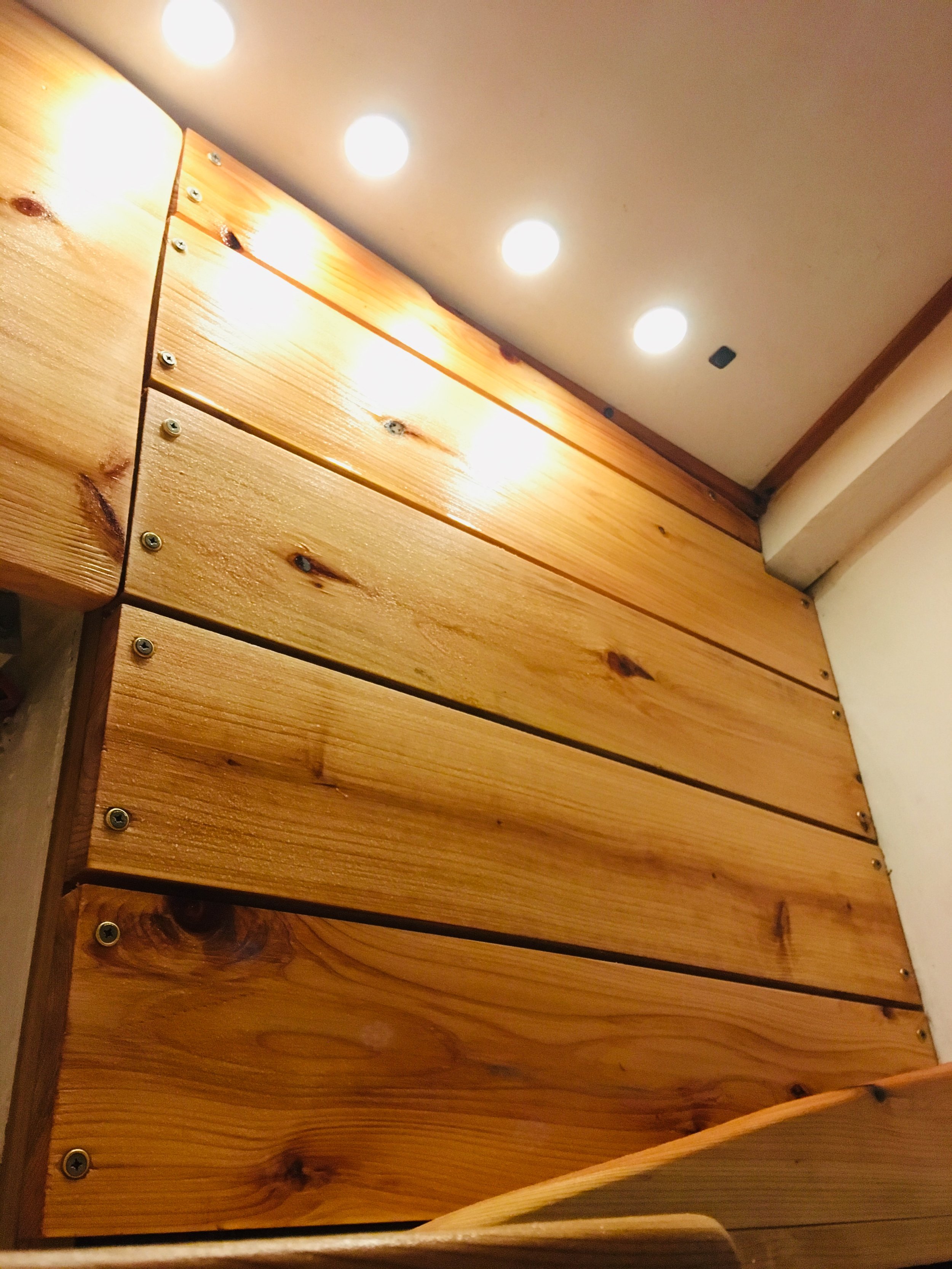For a long time, the head looked like a horrible dump! When you opened the door, you were greeted by bare fiberglass, waterlogged foam, and the utter lack of a place to stand. With time, this transformed into the inability to stand because everything was covered in wet resin or wet paint.
As time clocked by, fiberglass turned to sawdust and the head began to take shape.
Today, we oil the wood and bring it to life because it is finished!
A mark of superior interior joinery is to put wood plugs over screw holes. I am not a superior carpenter, no, I am a basic woodworker who values accessibility over aesthetic. I kept the screw heads exposed and placed finishing washers around them to make my life easier should I ever need to pull a board.
This tall wall is hiding our chainplates. Yearly, I need to get to them and inspect them properly. Any rust needs to be sanded off and bare spots need to be covered with fresh paint. This is enough of a project, why add “replacing wood plugs” to the to-do list?
I went the easy and accessible way on this project. All the boards are fastened with stainless steel screws with exposed heads. When the time comes, I unscrew the boards, do my inspection, then screw them back on. Finished!
To make everything else “blend in” I carried this look over to the other cabinets that don’t necessarily need easy access.
The cabinet below the sink has a double purpose. First, it houses our large containers of dirt that we keep on hand for the composting toilet. Second, it has to hold all of our large or heavy cleaning supplies and keep them from falling out everywhere when we are underway. For this reason, the door to this locker was set facing aft. When we are on either tack, the contents will never lean upon this door.
Making the angled door fit in here with all the cleats and other supports was a bit tedious. Since it is mounted at an angle, the door swings in an odd arc. Then the top of the door needed to be cut back in such a way that it would clear everything that occurs above it. Luckily, Cryptomeria is a very soft and forgiving wood. All the cuts were easily made and an orbital sander was able to smooth everything out and make it looks like it was intended to be that way.















